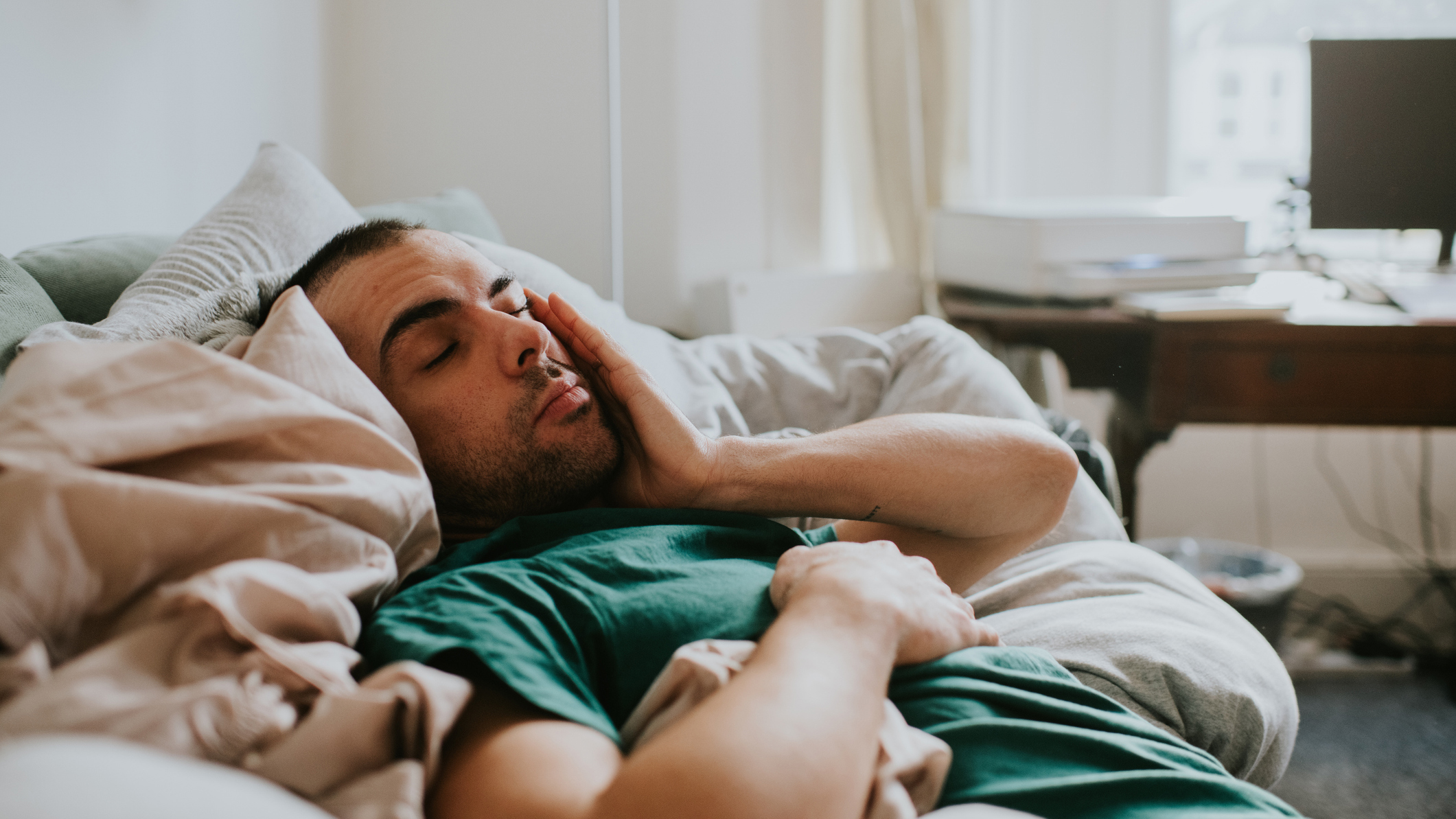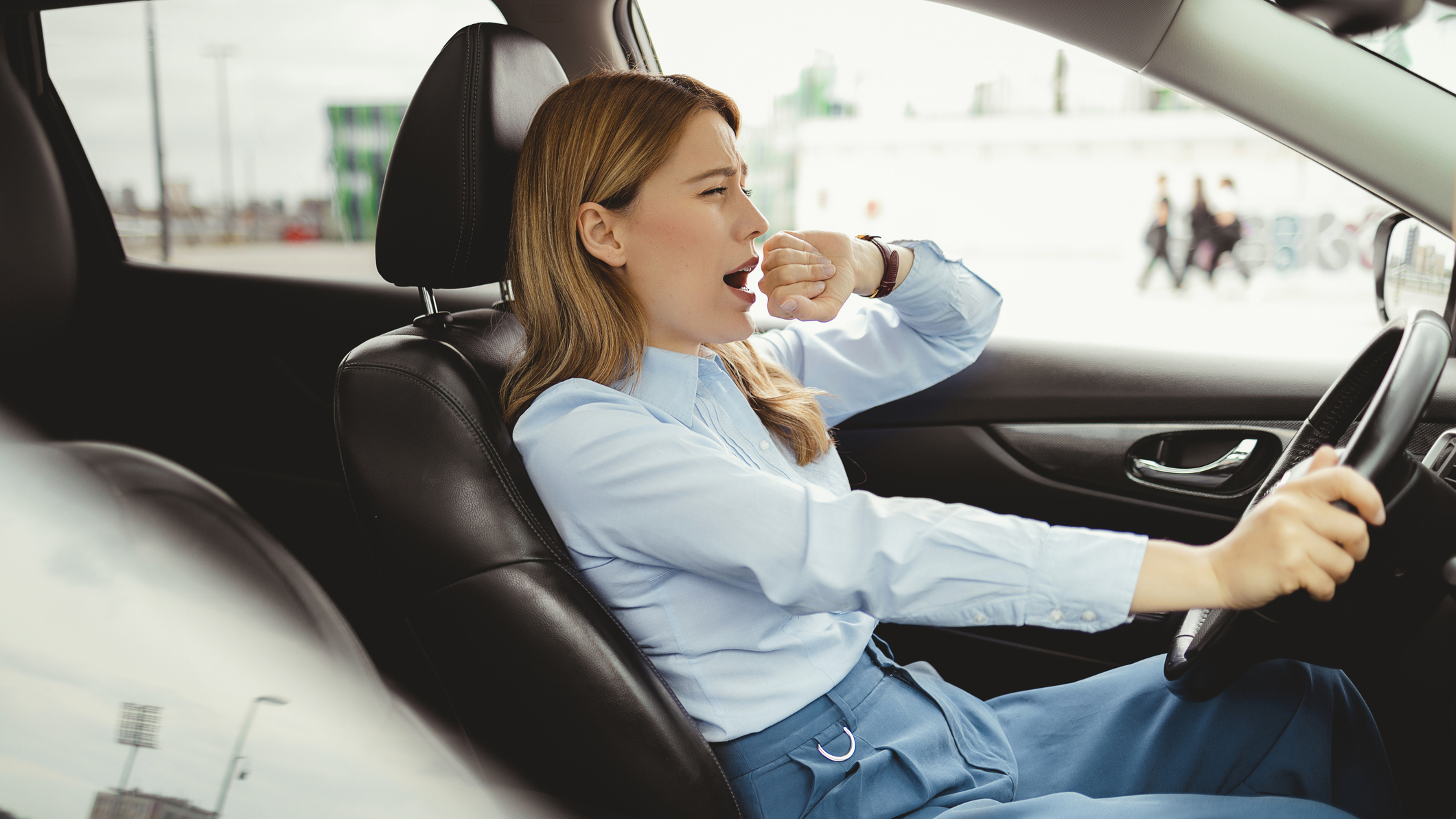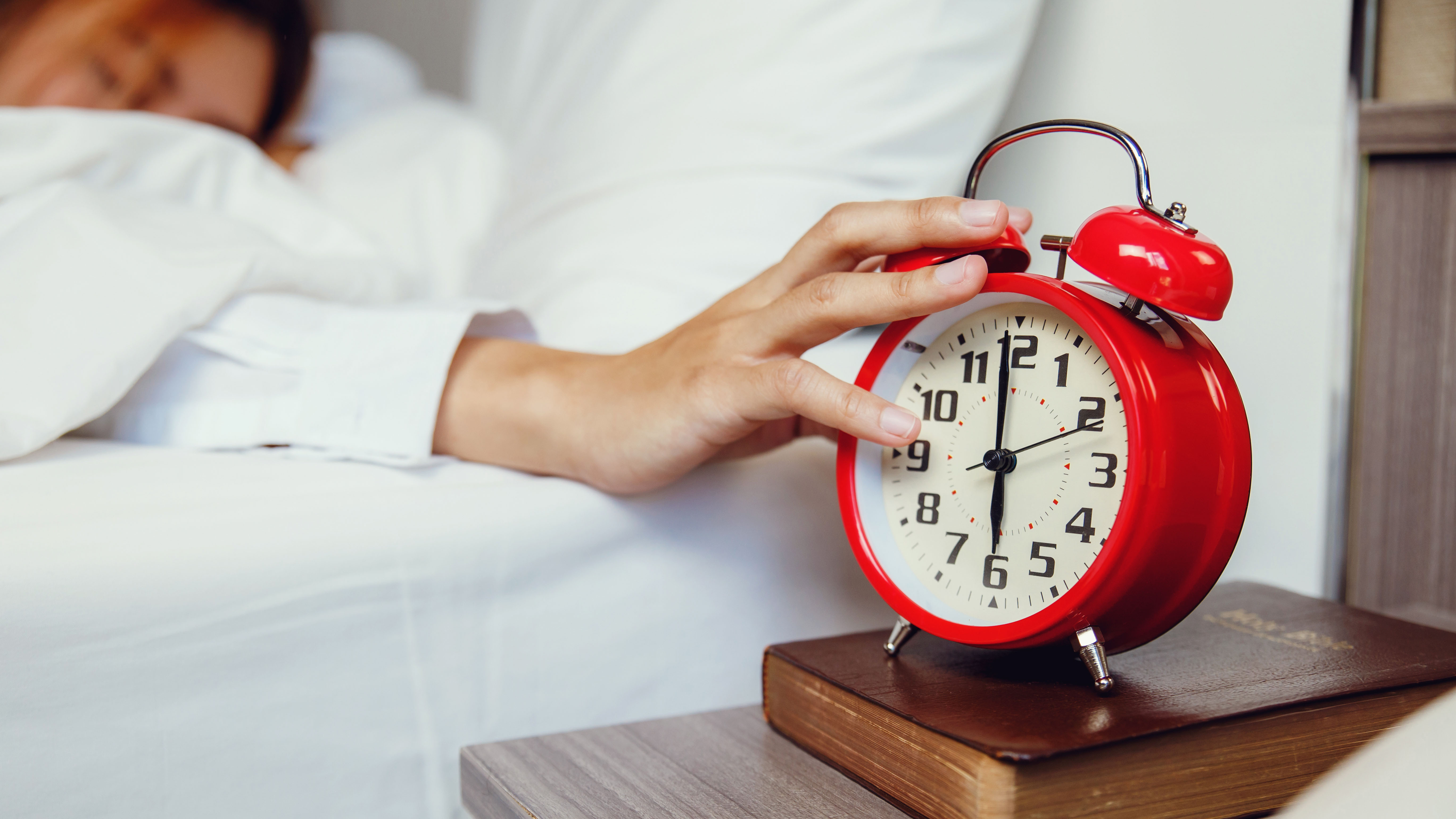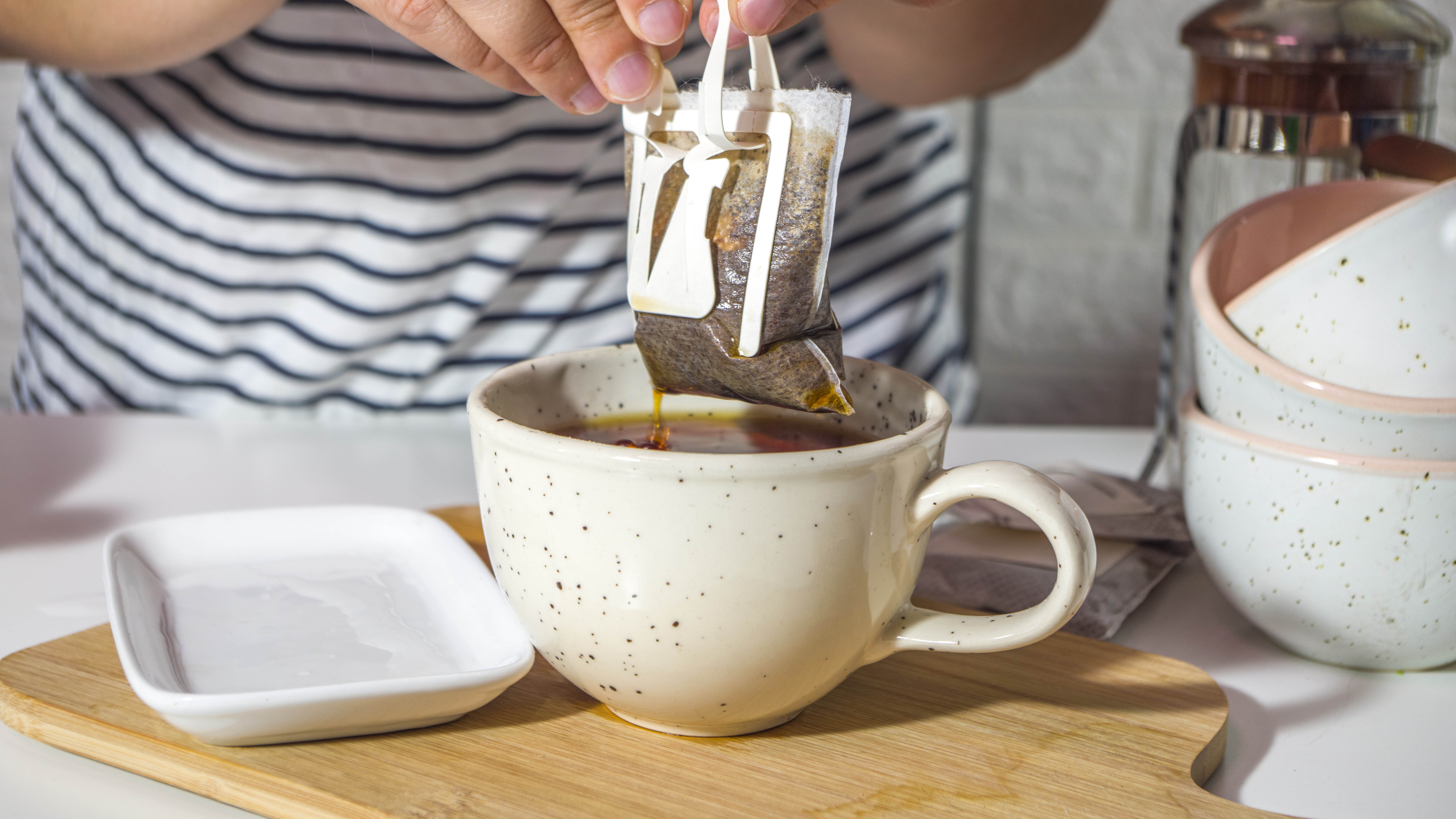
A microsleep is when we fall asleep for the briefest of moments, so brief in fact, that we might not realise it has happened. Dr Lindsay Browning, neuroscientist, owner of leading sleep issues clinic Trouble Sleeping and author of Navigating Sleeplessness says, “Sometimes the person’s eyes will shut, but a microsleep can still happen with eyes open.”
Lasting only one to 15 seconds, these mini slumbers are the result of several factors, including lack of normal sleep due to stress, lifestyle or conditions such as sleep apnoea. Microsleeps might sound harmless – after all, what’s a few seconds? – but the consequences can be big, especially if you fall asleep at the wheel while driving.
We explore microsleeps in more detail below, but one of the best ways to avoid having them is to get a decent night’s sleep, whether that’s by changing up your bedtime routine or investing in the best mattress for your body and sleep style. For now, here's what you need to know about microsleep – what is it, how to tell if you're having one, and how to prevent them from happening.
What is a microsleep?
According to sleep specialist, neurologist, and author of the The Sleep Solution, Dr Chris Winter, a microsleep is a “very brief period of sleep or unconsciousness that may happen in such a way that the person is completely unaware that it has happened”.
These brief moments usually happen during the day, but unfortunately, it can be difficult to tell if you are experiencing microsleeps as they are so fleeting, occuring for only a few seconds.

However, if you are not getting good-quality rest at your usual sleep time, and find you yawn frequently or have slower responses to what is going on around you, then these are some handy tell-tale signs that you could be microsleeping.
Microsleeps can be a sign of sleep deprivation where the individual is literally ‘falling asleep on their feet’
Dr Chris Winter, Neurologist
If these small sleeps happen when you are relaxing at home, watching TV or reading a book, the risk factors are relatively low. However, if you experience microsleeps when you are at work, then the results could be inconvenient or, worse still if you are driving, then the results could be fatal.
But why do microsleeps happen? Dr Chris Winter says: “They can be a sign of sleep deprivation where the individual is literally ‘falling asleep on their feet’ because they are so sleepy. They can occur in dangerous situations and be a sign of excessive daytime sleepiness.”
How to tell if you’re experiencing microsleeps
As mentioned, it can be difficult to know if you are experiencing microsleeps because they are so fleeting – sometimes only lasting up to 15 seconds at most. This means you might need to rely on someone else to tell you if they see you nodding off. Dr Chris Winter adds: “It's up to the sleeper to believe what they are being told.”
However, the good news is there are several signs that can alert us to the fact we might be microsleeping. Dr Lindsay Browning, says: “A sign of having a microsleep might be you realise you have missed a small part of a TV show, or your eyes may close for longer than a blink.”
She adds that other indications are: “Your head may have nodded forwards and you snap it up, realising you just fell asleep briefly, or you may be reading a book and realise you haven’t actually processed anything you just read.”
Other signs to look out for include:
- Excessive yawning
- Frequent blinking
- ‘Hypnic jerks’ where the body twitches a second or two before falling asleep
- Zoning out
- Difficulty keeping eyes open
Are microsleeps dangerous?
Because microsleeps are typically a sign of sleep deprivation or a sleep disorder, it is important that you seek support from a healthcare professional if you're having difficulty getting the required amount of sleep. While microsleeps are generally safer when we're not being active, if they occur while we are driving or operating machinery the consequences could be devastating. “Sleepy driving is a major cause of road traffic accidents," says Dr Browning.

According to road safety charity Brake, 1 in 8 drivers have admitted to nodding off at the wheel. The charity states that the warning signs of a microsleep are “increased difficulty concentrating, yawning, heavy eyelids and eyes starting to ‘roll’.” They also acknowledge that, “by the time your head starts nodding, you could be having a microsleep”.
“If you are driving and realise that you are sleepy or having a microsleep, then it is important to pull over at a service station have a strong coffee and then take a nap in the car for around 20 minutes,” advises Dr Browning.
“By the time you've finished the nap, the caffeine will have entered your system, helping you to feel more alert and awake, plus the nap will have taken the edge off some of the tiredness. If you still feel too sleepy to drive, you will need to make other travel plans rather than putting yourself and others on the road at risk of you falling asleep at the wheel.”
What is the treatment for microsleeps?
The best way to minimise your microsleeps is to get better-quality rest, and the key to this is to first identify why your sleep is disrupted. If you suffer from a disorder such as sleep apnoea, then “people may experience more microsleeps because they are not getting quality sleep during the night,” reveals Dr Browning.
Microsleeps are especially common if somebody is burning the candle at both ends
Dr Lindsay Browning
“Treatment for sleep apnoea such as with a CPAP (continuous positive airway pressure) machine will help restore the quality sleep at night and reduce daytime sleepiness and reduce microsleeps.”
If your sleep quality is affected by late nights, early starts and waking during the night, look at your daily routine. “Microsleeps are especially common if somebody is burning the candle at both ends," explains Dr Browning. "Improving your night-time sleep and making sure you get sufficient good-quality sleep will help you be less sleepy during the day and make microsleeps less likely to happen.”
How to prevent microsleeps from happening
1. Establish a regular bedtime routine

Keeping to the same pre-bedtime routine every evening is a great way to signal to your brain that it’s time to unwind. Try to include relaxing activities such as reading or having a bath in the time leading up to sleep (between 30 minutes and two hours). Setting an alarm will help you remember when it’s time to start the routine.
2. Avoid heavy meals and alcohol before bed
Eating too close to bedtime can affect your quality of sleep, as the body is more focused on digestion. It can also bring on acid reflux and heartburn, making it difficult to get comfortable when you should be nodding off. The same goes for alcohol – try to avoid this at least four hours before bedtime, as it is known to worsen sleep apnoea and snoring, as well as lead to poorer quality sleep.
3. Make sure your room is the right temperature
According to the Sleep Charity, the best temperature for sleep is around 16-18°C (60-65°F). This is because the temperature needed to kickstart melatonin production – the chemical the body produces that helps promote sleep – is lower.
As our temperature starts to drop in the evening this is the body’s signal for snooze, so maintaining a lower temperature in the bedroom is ideal for helping you drift off. Keeping the window open, using a lighter duvet and using a fan before bedtime will all help.
4. Avoid caffeine after lunchtime

Caffeine is well known for helping perk us up when we feel tired, which is exactly the reason why we should avoid it before bedtime. And, as well as coffee, that also includes hidden caffeine in beverages such as energy drinks. Making the switch to non-caffeinated soft drinks and herbal teas in the afternoon will guarantee that your brain won’t be buzzing and keeping you awake into the small hours.
5. Limit screentime before bed
Our hectic world filled with smartphones and laptops can be over-stimulating for the brain, and the blue light that these devices emit from their screens can affect our quality of sleep too, suppressing our melatonin levels and messing with our body’s natural circadian rhythms.
Even the merest beep or buzz can affect sleep too, sending the brain into a more alert state, so make sure all devices are out of bedroom and switched off well before bedtime.







